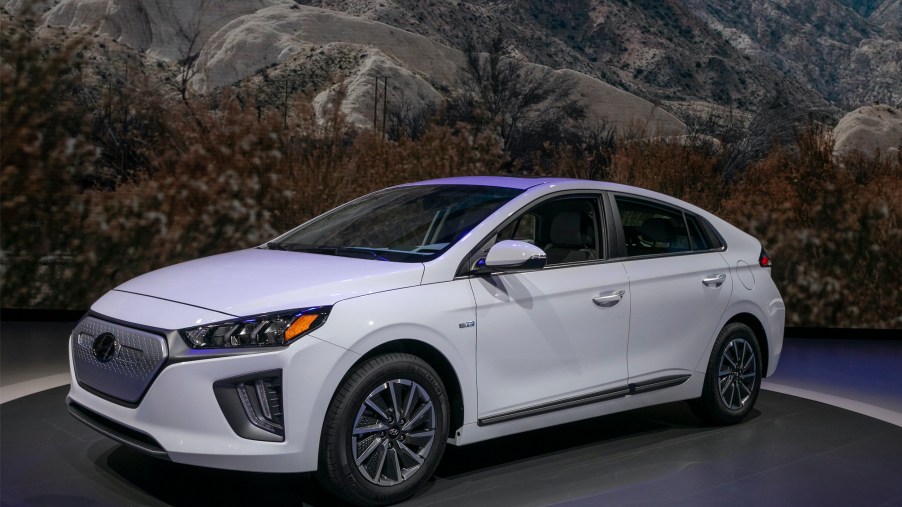
A Hyundai Ioniq Owner Is Suing the Automaker Over 1 Word
When it comes to an eco-friendly vehicle, the Hyundai Ioniq delivers in almost every way possible. However, there’s one issue that it needs to address. One that sent it to the court system to get ironed out all because of a certain driver’s safety feature.
CarComplaints.com shares a new story of a lawsuit pending against Hyundai for false advertising and misleading marketing all over one word. Let’s see how one little word caused so much trouble.
What is the difference between avoidance warnings and avoidance assistance?
Hyundai places special sensors in the rear bumper of the vehicle. These sensors scan the surrounding area from left to right in search of any item that could come into the blind-spot path or within the rear cross-traffic system of the car.
When it detects something within that area that could cause a collision, it will warn the driver of the impending crash. So they can perform avoidance maneuvers to prevent any type of collision from occurring, which could cause damage to the car or injuries to a pedestrian.
The avoidance assist feature uses the same rear sensor system built into the rear bumper. When the sensors detect an object approaching that could result in a crash, the car will automatically apply the emergency braking system to avoid a collision with the object.
What is the lawsuit about?
The Hyundai Ioniq owner received a letter after purchasing his 2020 Ioniq model from a Hyundai dealership. He was told that his vehicle didn’t have the avoidance assistance systems. It only had the avoidance warning system.
The sticker on the model the owner purchased said the vehicle came with the avoidance assistance, not the warning. The lawsuit he took out against Hyundai was for misleading consumers into thinking their vehicle had the assistance feature.
People could think their vehicle would automatically avoid a collision but would find out too late that it doesn’t, resulting in a collision that could’ve been avoided if they used the correct wording in the first place.
The owner claimed he contacted Hyundai several times, but they didn’t respond. They also never provided him with any kind of solution to the problem he explained in his letter.
He also said that there just wasn’t any safe way to tell whether the vehicle had the assistance feature or just a warning. The only thing that could be done is to simulate a situation where the sensors would detect something in the path. Then you could tell if the car just warned you or if it applied avoidance maneuvers.
What is the Hyundai Ioniq?
The Ioniq is Hyundai’s eco-friendly vehicle that debuted in 2017 first as a hybrid and then as an EV. The 2020 model also sells a plug-in version as well. The Korean-based automaker designed it to be a competitor of the Toyota Prius.
As a hybrid, the Ioniq proves to be a worthy rival. The fuel economy in the Hyundai is a smidge bit better than the Toyota. The Ioniq manages a whopping 58 mpg with a 170-mile range on the electric battery. The Prius falls a few steps behind with an EPA rating of 56 mpg combined.
Hyundai offers a 1.6-liter engine generating 134 hp combined with the dual-clutch automatic transmission. This enables it to clock 8.9 seconds for a 0 to 60 mph run.
The Ioniq offers plenty of features for any owner, However, you might want to consider double-checking to see which Ioniq model you have. Does it come with the avoidance warning or avoidance assistance?


